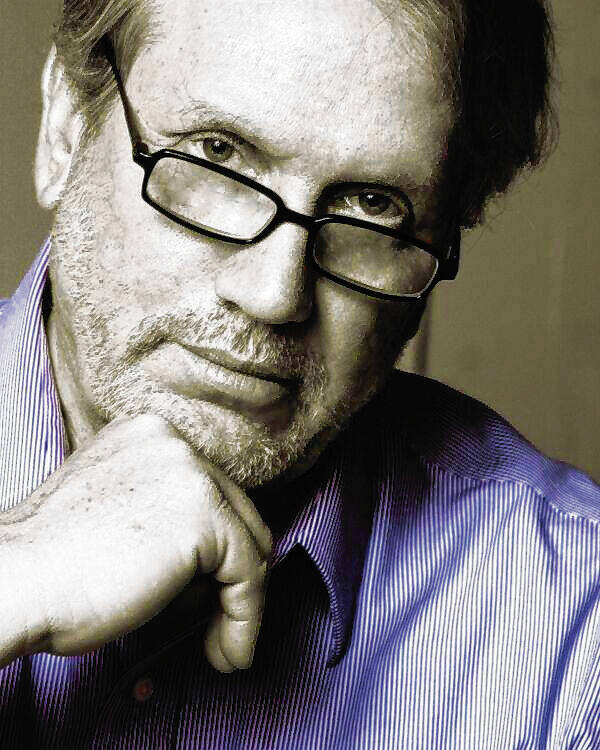
Brian Howey
By Brian Howey
Guest columnist
Connor Sturgeon, a former star athlete at Floyd Central High School, had just shot about a half-dozen of his Old National Bank colleagues with his legally purchased AR-15 when he sat in the lobby and waited behind reflective glass for the cops to come.
One of the first to respond was 26-year-old Louisville Police Department Officer Nickolas Wilt, a rookie working just his fourth shift after being sworn in on April 4.
Wilt was ambushed, taking an AR-15 round to his brain.
“They have him sedated. We are keeping our fingers crossed. It’s just a wait and see,” LaGrange Fire Chief Jim Sitzler told CNN after the shooting. Wilt is a volunteer firefighter with the department. “Hopefully, he will recover enough where he can go to rehab. (Nick) is going to have a long road ahead of him, but he’s young.”
As of this week, he remained in critical condition, according to published reports.
When Dr. Jason Smith of the University of Louisville Medical Center was asked on MSNBC’s “Morning Joe” about the difference between a wound created by an AR-15 as opposed to a Glock 9mm handgun, he responded, “There is simply no comparison. The energies and velocities of the bullets moving from a rifle are just devastating to the human body. That is what they were designed to do. The amount of energy impacting all the tissues, it just pulverizes the tissues, it liquefies organs, it destroys and pulverizes bones and muscles, it just leaves these horrific wounds that are almost unable to be treated because of how devastating they can be. Handguns simply don’t carry that kind of energy. It just makes treating those patients so much more difficult.”
Dr. Smith and his colleagues in Louisville and across the nation now routinely see this type of American carnage.
“The amount of gun violence and the escalation that has happened over the 22, 23 years since I have been out of medical school has just been unbelievable,” he said. “This was somewhat isolated and on a downturn in the 1990s, and the uptick of what we’re seeing now is on a scale that has not been seen in this country ever. That is what people need to understand. This is a public health crisis.
“We have to begin the discussion. We have to have the dialogs because there is no simple answer any longer,” Smith said. “We have to be able to come up with complex solutions. I would simply ask you to do something because doing nothing, which is what we’ve been doing, is not working.”
This epidemic of gun violence has brought a low-grade war into American society. As of the Louisville shooting, the Gun Violence Archive reported there had been 147 mass shootings (involving four or more victims) in the United States this year.
There have been 73 kids under age 11 killed and 164 injured. There have been 409 teenagers killed and 986 wounded. There have been 16 police officers killed and 109 wounded.
As of April 12, the Gun Violence Archive reported there had been 11,757 gun deaths so far this year, including 5,025 homicides and 6,732 suicides.
There have been 377 school shootings since the massacre at Columbine in 1999. Last year, there were 46 school shootings — more than any year since Columbine. A Pew Research Center analysis found that the number of children under the age of 18 who were killed by guns rose from 1,732 to 2,590 between 2019 and 2021 — a stunning increase of 50% in just two years.
A sizable share of American parents are worried about their kids getting shot. In a fall 2022 Pew Research Center survey, 22% of parents with children under 18 said they were extremely or very worried about any of their children getting shot at some point, while another 23% said they were somewhat worried.
These are siren symptoms of a sick society.
What can we do to stem this mayhem without violating the Second Amendment?
How about raising the gun purchasing age to 21 and preventing those who have a record of violent misdemeanors, alcohol abuse or domestic violence from purchasing? Or banning hollow-point bullets (the U.S. military prohibits them). Or reinstating the assault weapon ban? Or high-capacity magazines, which were never meant for civilian use? Or requiring steeper insurance premiums for guns, the way the industry does for flashy sports cars or homes with swimming pools?
And then there are the societal costs that are largely unexplored.
As Hoosier legislators complain about a spike in property tax bills, not yet appearing in the conversation is the array of expensive steps taken to “harden” our schools and add school resource officers, borne by taxpayers. We have no idea what the collective price tag is.
In past eras, if a 23-year-old bank employee was fired, he might go on a bender or end his own life. On April 4, Connor Sturgeon took his AR-15, killed five people and injured eight (including three police officers), all while live streaming his massacre on Instagram.
If these atrocities persist, if this low-grade war on Americans continues without a government response, there will be political ramifications. If not in the coming 2024 election cycle, then when the generation of kids who have endured “active shooter drills” in school begin voting and running for office.
Brian Howey is managing editor of Howey Politics Indiana/State Affairs at stateaffairs.com/pro/Indiana, where this column was previously published. Find Howey on Facebook and Twitter @hwypol. Send comments to [email protected].
